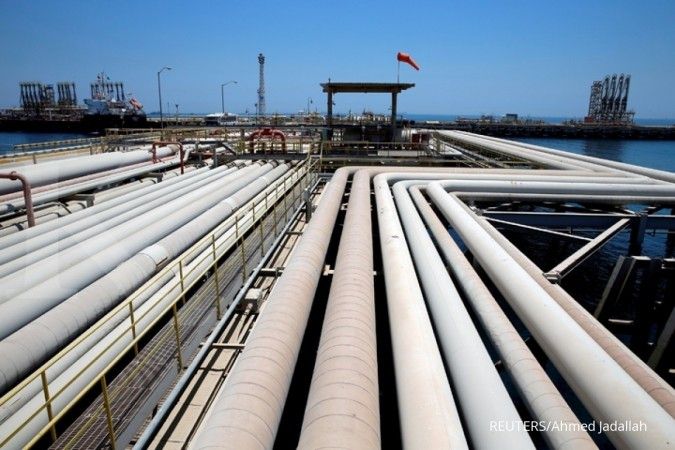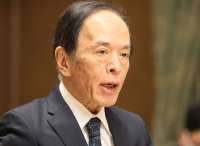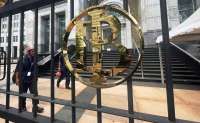INFLATION - WASHINGTON. The number of Americans filing applications for unemployment benefits dropped to a 49,5-year low last week, pointing to sustained labor market strength that could assuage fears the economy was rapidly losing momentum.
Other data on Thursday showed producer prices increased by the most in five months in March amid a surge in the cost of gasoline. But underlying producer prices remained soft, the latest indication of tame inflation pressures that strengthen the Federal Reserve's decision to suspend further interest rate increases this year despite a tight labor market.
"The economy's wheels continue to turn and any thought that growth was going to stop has to be reassessed," said Chris Rupkey, chief economist at MUFG in New York. "Fed officials are on the sidelines awaiting confirmation of what to do next."
Initial claims for state unemployment benefits fell 8,000 to a seasonally adjusted 196,000 for the week ended April 6, the Labor Department said. That was the lowest level since October 1969, when the size of the labor market was about half of what it is now. Claims have declined for four straight weeks.
Economists polled by Reuters had forecast claims rising to 211,000 in the latest week. The four-week moving average of initial claims, considered a better measure of labor market trends as it irons out week-to-week volatility, fell 7,000 to 207,000 last week, the lowest level since December 1969.
The labor market's strength should allay worries of an abrupt slowdown in economic growth, which gained traction after the U.S. Treasury yield curve briefly inverted in late March.
The economy lost speed at the turn of the year, reflecting fading stimulus from a $1.5 trillion tax cut package, trade tensions between China and the United States and weak global growth. Data, including retail sales and the trade deficit, have improved, raising the possibility that the anticipated slowdown in growth in the first quarter will not be steep.
Goldman Sachs is forecasting gross domestic product rising at a 1.6% annualized rate in the first quarter. The economy grew at a 2.2% pace in the October-December period.
Job growth in the first quarter averaged 180,000 per month, well above the roughly 100,000 needed to keep up with growth in the working-age population. At 3.8%, the unemployment rate is near the 3.7% Fed officials project it will be by the end of the year.
U.S. Treasury prices fell, while the dollar was little changed against a basket of currencies. Stocks on Wall Street were trading marginally higher.
Weak core inflation
In a second report on Thursday, the Labor Department said its producer price index for final demand rose 0.6% in March, the largest increase since last October, after edging up 0.1% in February.
In the 12 months through March, the PPI rose 2.2% after advancing 1.9% in the 12 months through February. Economists had forecast the PPI climbing 0.3% in March and increasing 1.9% on a year-on-year basis.
A key gauge of underlying producer price pressures that excludes food, energy and trade services was unchanged last month after ticking up 0.1% in February. The so-called core PPI increased 2.0% in the 12 months through March. That was the smallest annual increase since August 2017 and followed a 2.3% rise in February.
Data on Wednesday showed consumer prices rose by the most in 14 months in March, driven by more expensive gasoline. But core inflation remained muted amid a plunge in the cost of apparel.
"The recent consumer and producer price data don't point to any major acceleration or deceleration in inflation," said Joel Naroff, chief economist at Naroff Economic Advisors in Holland, Pennsylvania. "Therefore, the Fed will feel no economic pressure to do anything."
Minutes of the Fed's March 19-20 policy meeting published on Wednesday described inflation as "muted," though officials expected it to rise to or near the U.S. central bank's 2% target. The Fed's preferred inflation measure, the core personal consumption expenditures (PCE) price index, is currently at 1.8%.
The minutes showed some Fed officials believed the tame price pressures could be the result of low inflation expectations and also an indication that there was still slack in the labor market despite the very low unemployment rate.
Last month, gasoline prices shot up 16.0%, the most since August 2009. Gasoline accounted for over 60% of the 1.% rise in goods prices last month. Goods prices increased 0.4% in February.
Prices for healthcare services fell 0.2% last month after rising 0.3% in February. The cost of hospital outpatient services fell by the most since July 2014. Those healthcare costs feed into the core PCE price index and suggested weaker inflation readings in February and March.
"We look for moderation (in the core PCE price index) to 1.70% in February and 1.60% in March," said Daniel Silver, an economist at JPMorgan in New York.
The Commerce Department will publish February and March PCE price data later this month.
/2019/02/12/497173632p.jpg)













